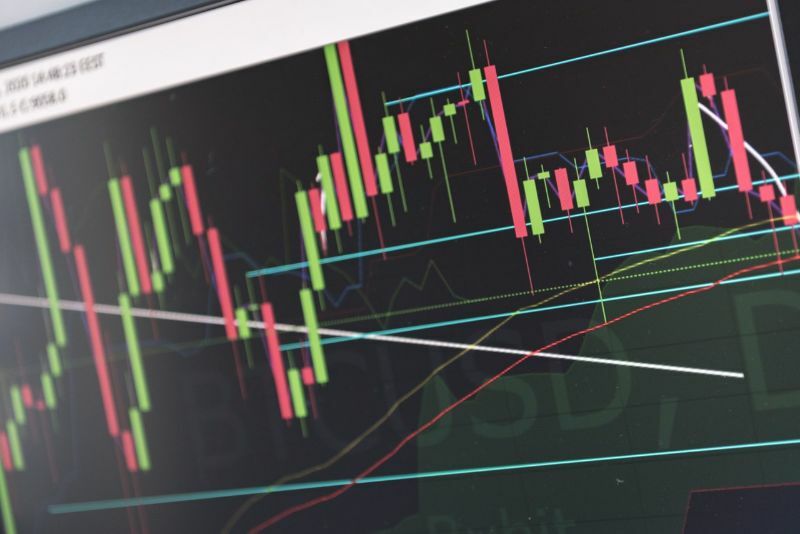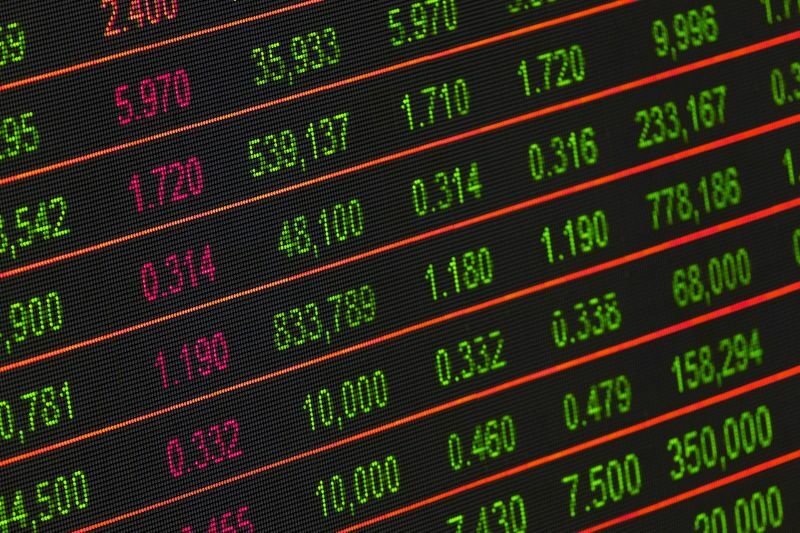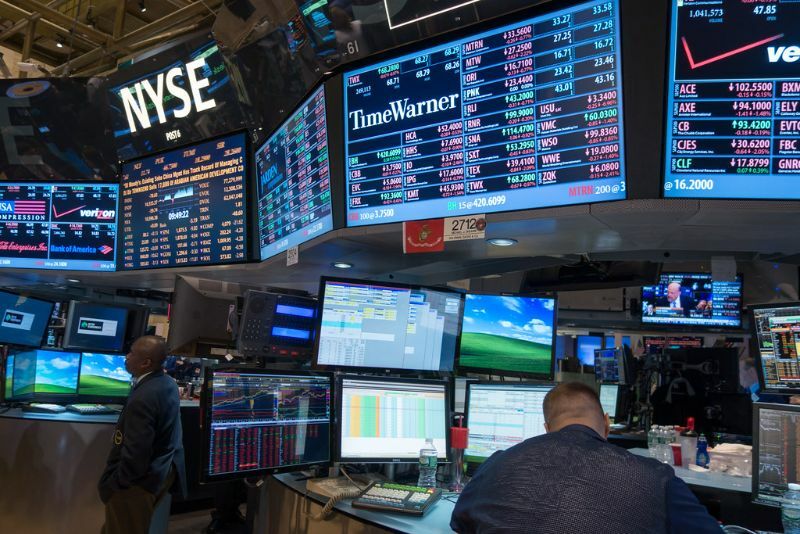Dividend stocks are regarded as secure and dependable investments. Many of them are high-value businesses. Dividend aristocrats—companies that have increased their dividend every year for the past 25 years—are frequently seen as safe investments.
Is it good to invest in dividend stocks?
Stocks with a high dividend yield can be an excellent investment. Dividend stocks pay out a percentage of the company’s earnings on a regular basis to shareholders. Most dividend stocks in the United States pay a specific amount each quarter, and the best ones raise their payouts over time, allowing investors to establish an annuity-like cash flow.
Can you get rich from dividend stocks?
Investing in the greatest dividend stocks over time can make you, your children, and/or grandkids wealthy. Investing small amounts of money in dividend stocks over time and reinvesting the dividends can make many investors wealthy, or at least financially secure.
Are dividend stocks good for beginners?
Income investment comes in a variety of flavors. Some people concentrate on companies that are well-established and pay high dividends. These generate greater income now, but they are less likely to rise in the future, and they frequently decrease dividends during recessions. Other investors like companies with high growth rates and low initial dividends. These have a good long-term track record, but they don’t pay out a lot of money right away. So, what are the greatest dividend stocks for new investors to consider?
Between the two dividend investing extremes, fortunately, there is a medium ground. Companies with above-average current dividends that have also increased regularly for decades are the happy middle. Companies who were able to maintain their dividend growth during the Great Recession, for example, are significantly more likely to survive the novel coronavirus.
Dividend Aristocrats are a popular investment strategy. These are firms that have raised their dividend for at least 25 years in a row. Because they are a known quantity, they are excellent income stocks for novices to invest in. Companies that have been able to grow their dividend for that long are usually stable, robust, and have established competitive advantages over their competitors. They form the foundation of your investing portfolio.
We always witness big changes in the stock market when the economy is unclear.
When a stock’s price starts to fall, it’s tempting to sell it soon.
If you anticipate the economy will expand in the coming years, a well invested portfolio will expand as well.
Tinkering with your portfolio on a regular basis can often do more harm than good to your investment.
Focusing on blue-chip stocks across a number of industries is one method to ensure you have a properly invested portfolio that doesn’t require too much fiddling. This list of seven dividend stocks for beginners is a fantastic place to start:
How much do I need to live off dividends?
Jack is a single individual who spends $48,000 per year to support himself in a high-cost-of-living area of California. He has a high risk tolerance and feels comfortable building a retirement portfolio that is significantly weighted toward equities rather than bonds and includes a lot of REITs with high dividend yields.
He anticipates a dividend yield of 6% per year from his retirement account. To live off dividends, he’ll need to invest roughly $800,000, based on $48,000 split by a 6% yield.
Is a high dividend yield good?
Dividend rates of 2% to 4% are generally regarded excellent, and anything higher than that might be a terrific buy—but potentially a risky one. It’s crucial to look at more than just the dividend yield when comparing equities.
Start smaller when starting from scratch
To make $1000 in dividends every month, you’ll need a portfolio worth around $400,000. That may appear to be an unreasonably large sum today, particularly if you’re not converting an existing IRA.
Rather, begin with smaller incremental dividend targets, such as $100 every month.
To achieve your greater aim, keep investing and reinvesting over time.
Now that huge brokerage firms have slashed trading costs to zero, it’s easier and more effective to buy smaller amounts of stock more frequently.
Invest in different stocks
Aside from the fact that you’ll need to invest in different firms to cover all 12 months of the year with “normal” equities, $400,000 is a significant sum of money. Diversifying the companies in which you buy stock reduces risk.
Three stocks are putting all of their eggs in one basket. If one of those stocks fails, it will affect a large portion of your portfolio.
Investing in different stocks also allows you to diversify your portfolio and buy something at a better price.
Perhaps divide it up such that no single investment provides for more than $200 or $250 in dividend income in a single month.
Look for stocks with consistent dividend payment histories
When it comes to the stock market, the one certainty is that it will rise and fall. And the only dividend that is guaranteed is one that is actually paid out.
However, stocks with a long history of dividend payments have a better likelihood of continuing to pay in the future.
Long-term payers typically desire to keep making payments in the future since their stock price will drop if they don’t.
A change in the dividend schedule could be caused by changes in the company or the market. A merger or acquisition could also modify the dividend strategy.
Double-check the stock’s next ex-dividend date
Check to determine if you’ll be eligible for the next dividend payment before you buy your shares.
The stock is trading without dividends on the ex-dividend date. To be eligible for future dividend payments, you must own the shares prior to that date.
Even if you aren’t eligible for the next dividend payment, you might still want to buy the stock. However, depending on what’s on your watchlist, another stock might be a superior buy right now.
Check what taxes you may owe on your income
You’ll almost certainly owe higher income taxes and paperwork each year if you’re constructing a dividend income portfolio in a conventional brokerage account rather than a tax-deferred retirement account.
If you want to earn $1000 a month in dividends, you’ll need a bigger investment to offset the taxes.
Confirm your specific situation with your best tax professional or the IRS.
Don’t chase dividend yield rates
It’s worth emphasizing one more. In normal stocks, high dividend yield rates could signify a problem with the firm, causing the stock price to fall. Check your company research again. It will be counterproductive to your goal if you lose both your dividend income and your stock value.
You could still want to take a chance on a particular stock based on your study. Simply enter the market as a well-informed investor with your eyes wide open.
REITs (or real estate investment trusts) are a special sort of stock that is taxed differently, resulting in greater dividend rates than “normal” equities.
Reduce the risk by splitting your monthly payments among multiple stocks
In comparison to the lesser monthly dividend targets, $1000 in dividends per month necessitates a significant investment in individual equities.
It’s also worth repeating that past performance does not guarantee future outcomes. Even with the longest-paying firms, dividend payments can stop at any time.
Consider buying multiple stocks with similar payout patterns to lessen the risk of one stock failing. Perhaps it’s two stocks paying $250 a month for the same pattern.
A basic Google Sheets dividend planner might assist you in organizing and tracking your dividend earnings.
When it comes to stock market investment, you will do your best with the knowledge available at the time. You can correct your course in the future if necessary.
How can I make $50 a month in dividends?
5 stages to build a dividend portfolio that pays out $50 each month in dividends, focusing on stocks that correspond to the 12 months of the year.
Passive income allows you to earn money while you sleep. Additionally, additional income sources assist you in achieving your broader, long-term financial objectives. Is it your long-term goal to pay off your debts with dividend income?
Allowing your dividend payments to reinvest increases your future potential earnings if you wait to spend them. Additional portfolio deposits, dividend reinvestment, and annual dividend payment increases will all improve your potential future income.
When you’re initially starting off with a dividend portfolio, $50 a month in dividends is a wonderful place to start to solidify your plan and gain confidence in your investing abilities. Also, don’t allow the procedure overwhelm you.
To achieve your goal, you’ll need a straightforward investing strategy and regular saving habits. The following are the five steps to building a dividend portfolio that will earn you $50 per month in dividends:
It takes time to build a monthly dividend portfolio of any size, especially when you’re starting from nothing. You’ll get there dividend by dividend if you have a good plan. Here’s a closer look at the processes and ideas that will help you get started on your dividend income journey.
Is dividend a good strategy?
When a publicly traded firm makes money, it has three options for how to spend it. It can put the money toward research and development, save it, or return the earnings to shareholders in the form of dividend payments.
Dividend income is similar to receiving interest from a bank for keeping money in a savings account. A 5% annual dividend yield means that if you own one share of stock for $100, the corporation will pay you $5 in dividend income each year.
Regular dividend income is a reliable and safe approach to build a nest egg for many investors. A dividend-based investing strategy can be a valuable addition to any saver’s portfolio, especially as a source of cash flow when it’s time to transfer lifelong assets into a retirement paycheck.
Are dividends paid monthly?
Dividends are normally paid quarterly in the United States, while some corporations pay them monthly or semiannually. Each dividend must be approved by the board of directors of the corporation. The company will then announce when the dividend will be paid, how much it will be, and when it will go ex-dividend.
Does Robinhood stock dividend?
Your dividends are processed automatically by us. By default, cash dividends will be credited to your account as cash. You can choose to automatically reinvest the cash from dividend payments from a dividend reinvestment-eligible security back into individual stocks or ETFs if you have Dividend Reinvestment enabled.






